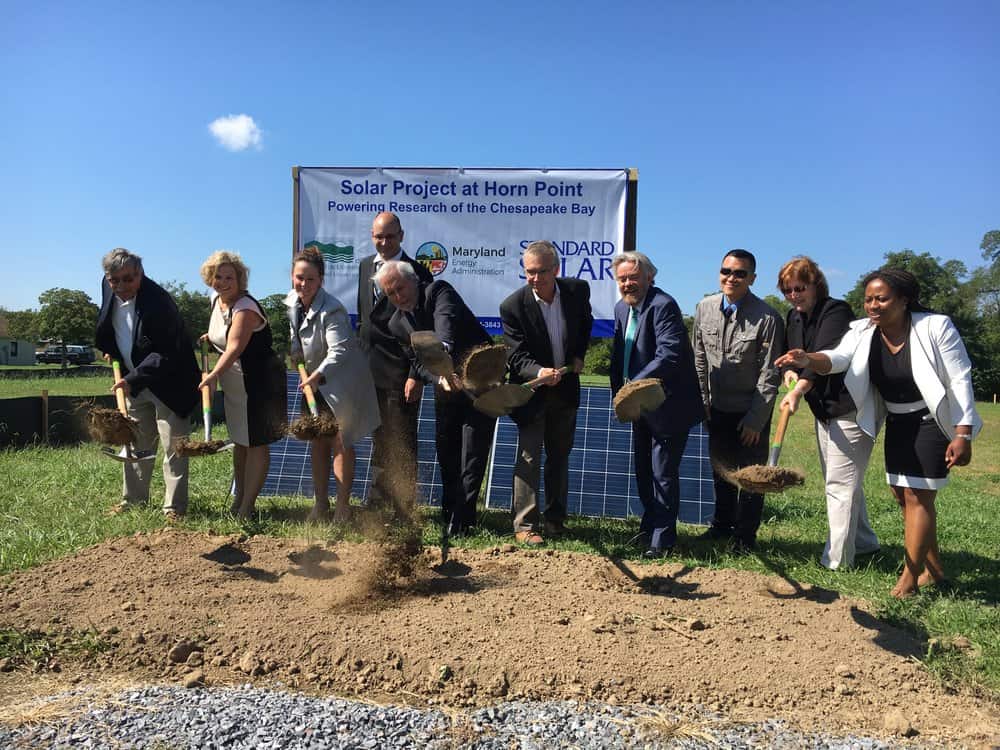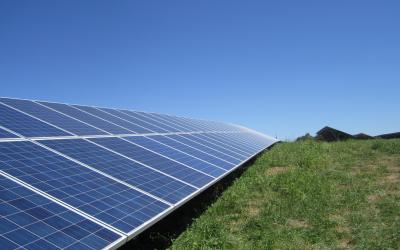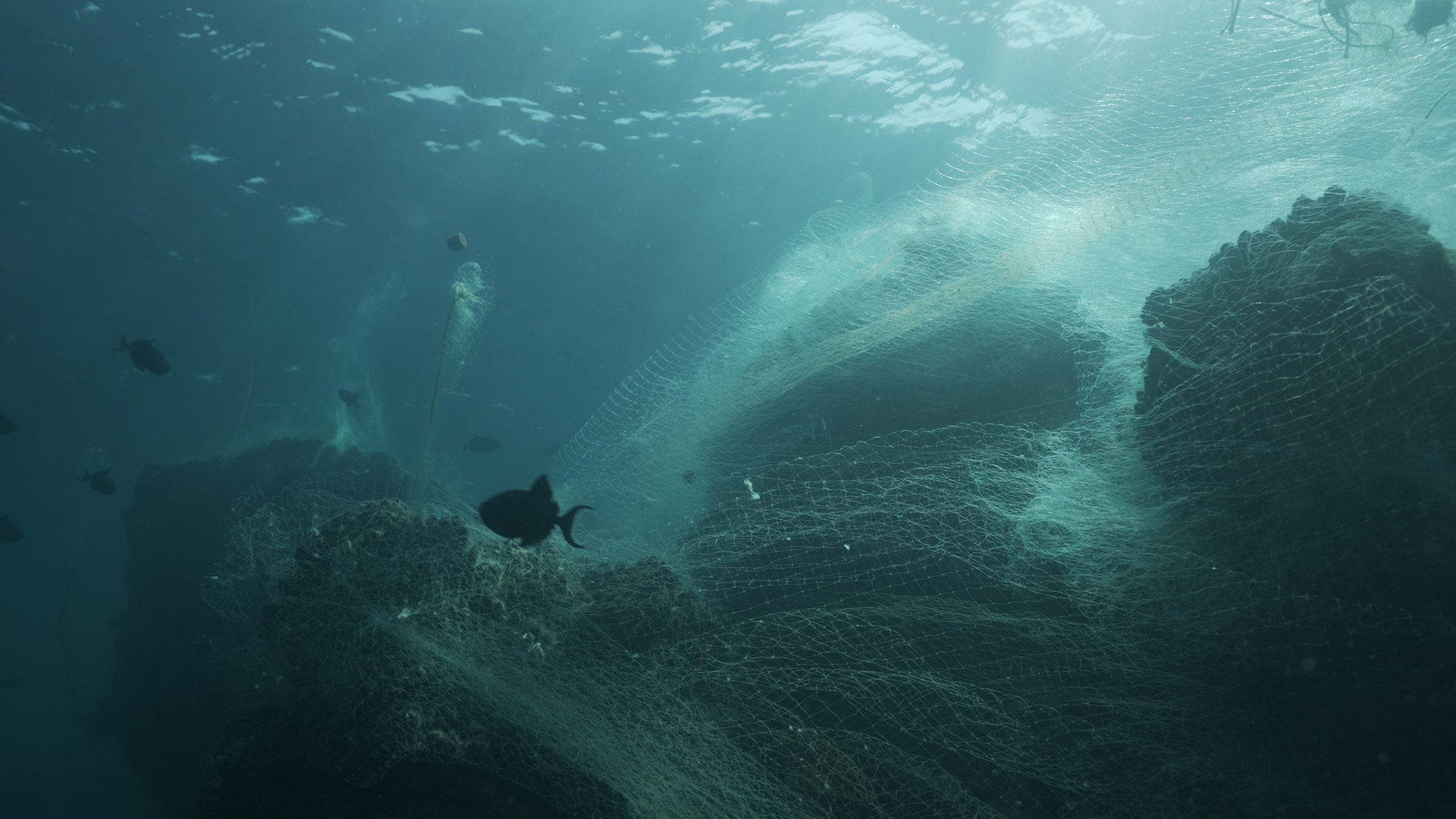
A 10-acre solar field is officially under construction at the University of Maryland Center for Environmental Science’s (UMCES) Horn Point Laboratory.
The Horn Point lab stretches 800 acres on the banks of the Choptank River in Cambridge. It is a top research facility for estuarine and ocean ecosystems, where, among other projects, tiny oyster spat are hatched in the lab before they are planted around the Bay.
On Thursday September 7, Horn Point and Standard Solar broke ground on a solar field that will be capable of generating half of all the energy the lab consumes each year. The 2 MegaWatt system has an expected approximate annual generation of 3.5 MegaWatt hours of solar renewable energy. The solar field is expected be in service by the spring of 2018.
UMCES also received a grant from the Maryland Energy Administration to install four electric vehicle charging stations under a new solar canopy on campus.
“Higher education has a key role in shaping a sustainable society. It’s essential that we lead by example,” said UMCES president Don Boesch, who has led the University System of Maryland’s Environmental Sustainability and Climate Change Initiative since 2008.
The project is a Power Purchase Agreement (PPA) in which Standard Solar installs and operates the solar panels in exchange for the use of land. UMCES agrees to purchase the equivalent energy being generated over the next 20 years from Standard Solar.
“The solar field is another example of how we are using innovative ways to manage Horn Point Laboratory in a way that reduces our environmental footprint and engages with the community,” said Mike Roman, director of the Horn Point Laboratory.




